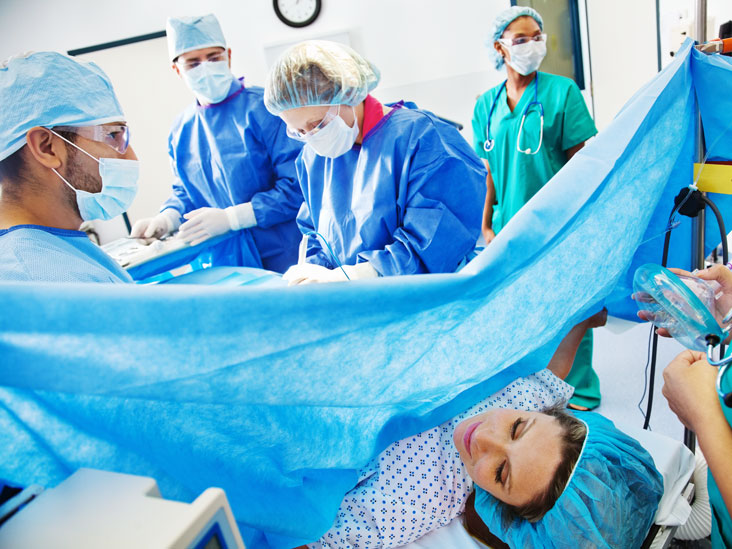The hair over external genitals are shaved off. A soap and water enema is given to evacuate the bowel so that she does not pass stool during labour pains. It is good to have a bath before entering the labour room.
The attending doctor would like to have obstetric examination, including vaginal examination, to ascertain certain information.
In the first stage, maternal condition, pulse and temperature are recorded every four hours. The foetal heart rate is also recorded every four hours. The progress of labour is assessed from the relationship of foetal head to the brim of the pelvis.
In this stage the woman is allowed to walk about. But as pain becomes frequent and strong, she should be put to bed. Mild sedatives and tranquillisers may be given to her. Avoid ingesting solids but there is no harm in taking small amounts of liquid food at intervals.
No sooner does the second stage begins, it is made sure that she passes urine and the bladder in fully emptied. If she fails to do that, doctors would like to put a catheter in her urethra.
As the second stage progresses, she is placed in the dorsal position. Now is the time for the woman to hold her breath and contract her abdominal muscle (bearing-down) during the pains and never in between.
Once the membranous bag containing watery fluid in which the baby floats has ruptured, baby’s heartbeat is recorded every 15 minutes.
As the head of the baby presses against the perineum and the anus dilates, the doctor takes action to prevent very fast expulsion of the head. This he does by promoting its flexion and encouraging its delivery not during contractions but in between them. The woman should not bear down at this point. Instead she should relax, open her mouth and breathe deeply. The doctor may like to give her a light anaesthetic to relax her.
All this helps to prevent perineal laceration, which generally shows poor healing. Most obstetricians, however take an additional precaution as well. They perform a planned surgical incision (usually mediolateral) in the perineal floor in all primigravidas. This cut is known as episiotomy and is sutured carefully after the expulsion of the placenta at a later point. The whole procedure should be carried out under strict aseptic conditions.
As soon as the baby’s head comes out, separate soft linen pieces are used to clean the eyes while a piece of gauze is used to clean the lips and nose. Mucus from the mouth is best aspirated.
After the head of the baby comes out, the woman bears down in the next contraction to deliver the shoulders while the doctor applies gentle traction upward for the posterior and downward for the anterior shoulder.
Once shoulders are out, spontaneous delivery of the baby is a rule. The baby should be allowed to cry vigorously. This may need little compression of the chest or a banging of the feet. No delay should occur in clearing air passages by aspiration.
At this stage, the doctor evaluates the 1-minute Apgar score to find out if resuscitation is indicated. The cord is held at the vulval outlet between the index finger and the thumb. When it stops pulsating, a ligature is placed at the baby’s umbilicus and another closest to the vulva. The cord is now divided as close to the umbilical ligature as possible. After cutting the cord with scissors, the stump is dressed having ensured that no blood is oozing.

While expulsion of placenta is being awaited in the third stage, the doctor re-examines the perineum in good light, noting not only the superficial but also the deep lacerations, if any.
Once the placenta and membranes are expelled, these are carefully examined for any retained portions inside the womb which may cause bleeding and sepsis later.
Lastly, episiotomy cuts as also any laceration are carefully sutured.
After this, the woman is carefully cleansed. A sterile gauze is applied to the vulva and fixed. It is changed as often as it becomes soiled. To provide comfort to the woman an abdominal binder is usually applied.
She is, as a rule, kept under observations for at least one hour after completion of the third stage in the labour room.
Some women keep getting afterpainsover quite a few days after the birth of the baby. These pains stimulate the cramps experienced during menstrual periods. The doctor prescribes a painkiller which helps.




